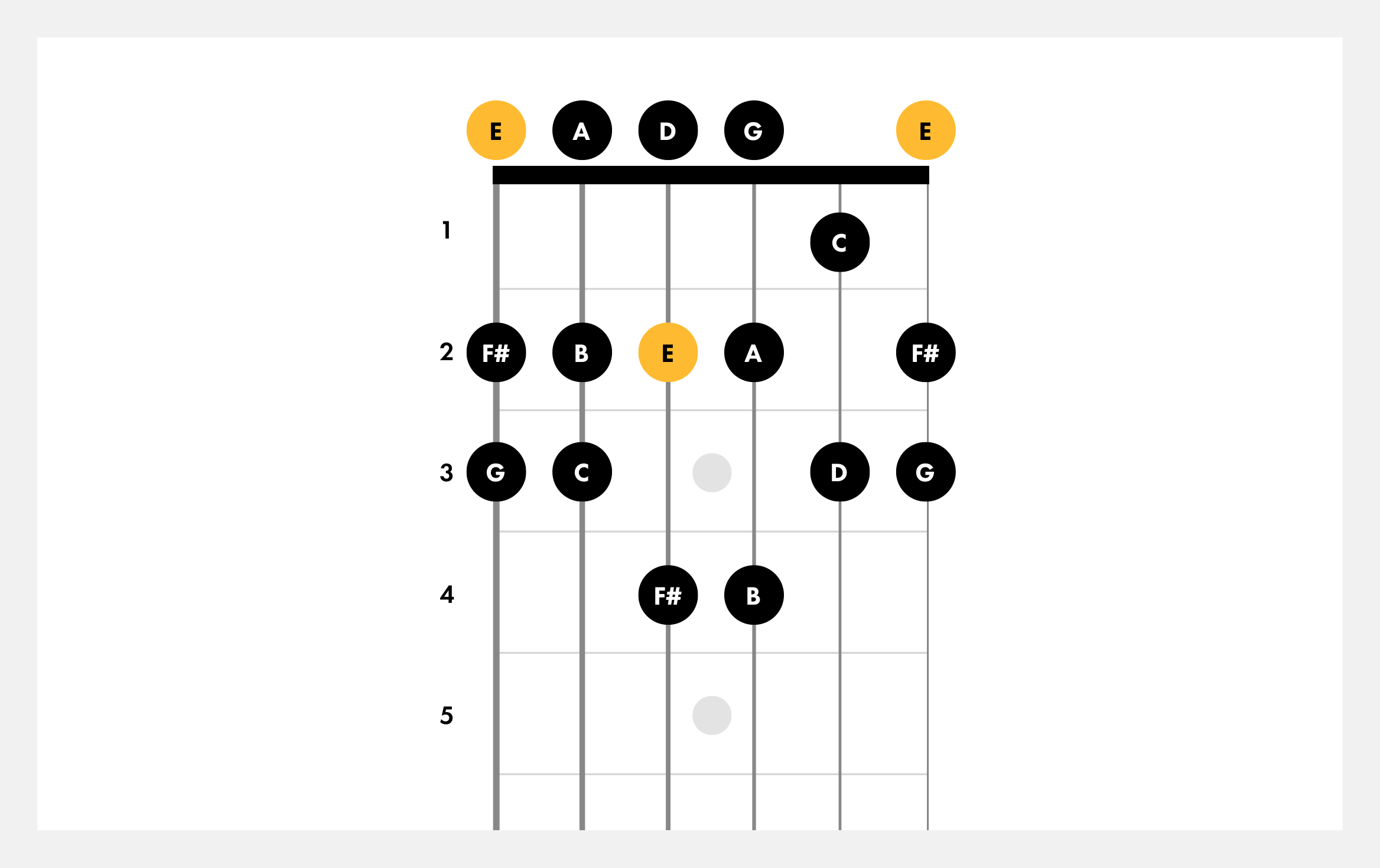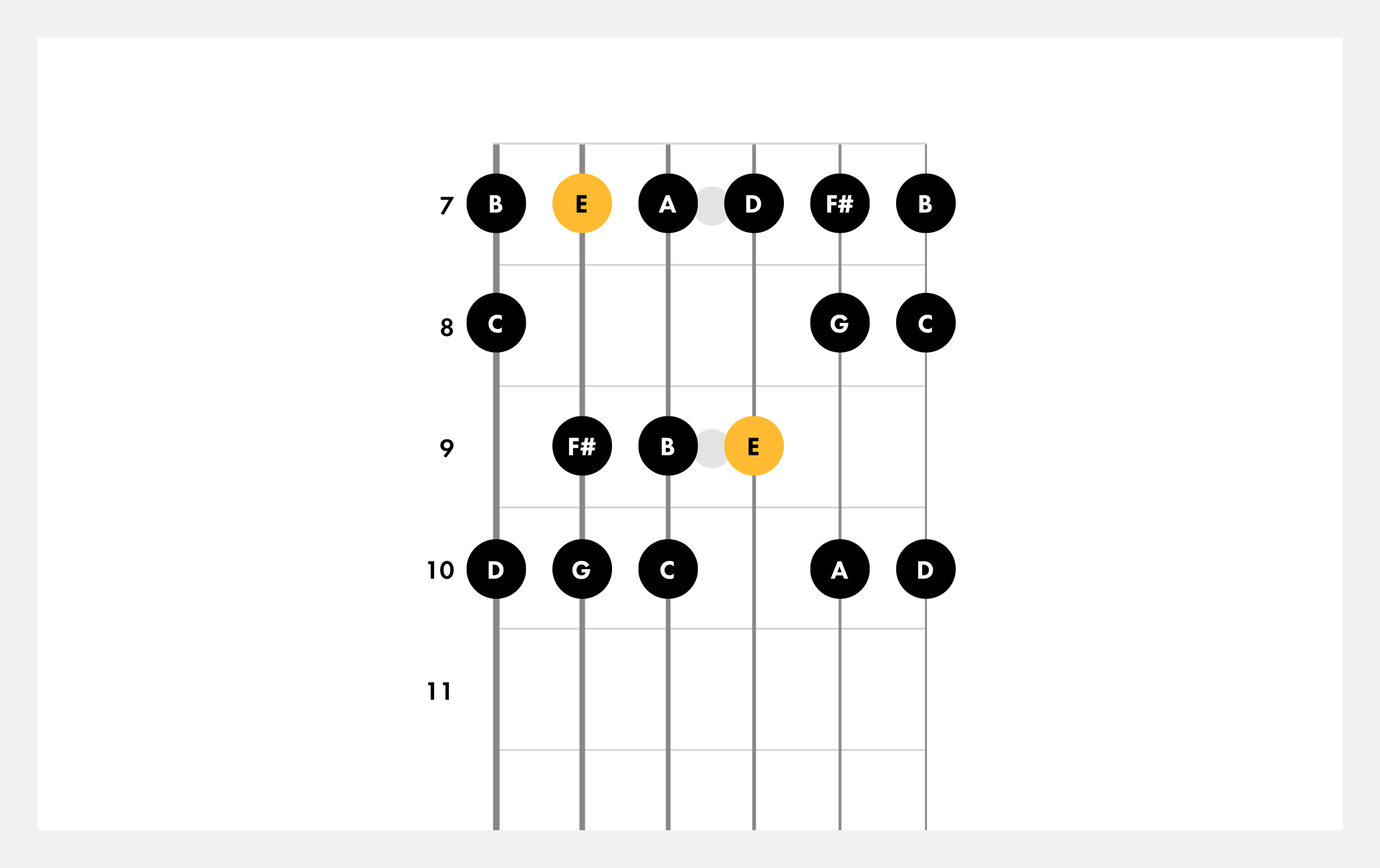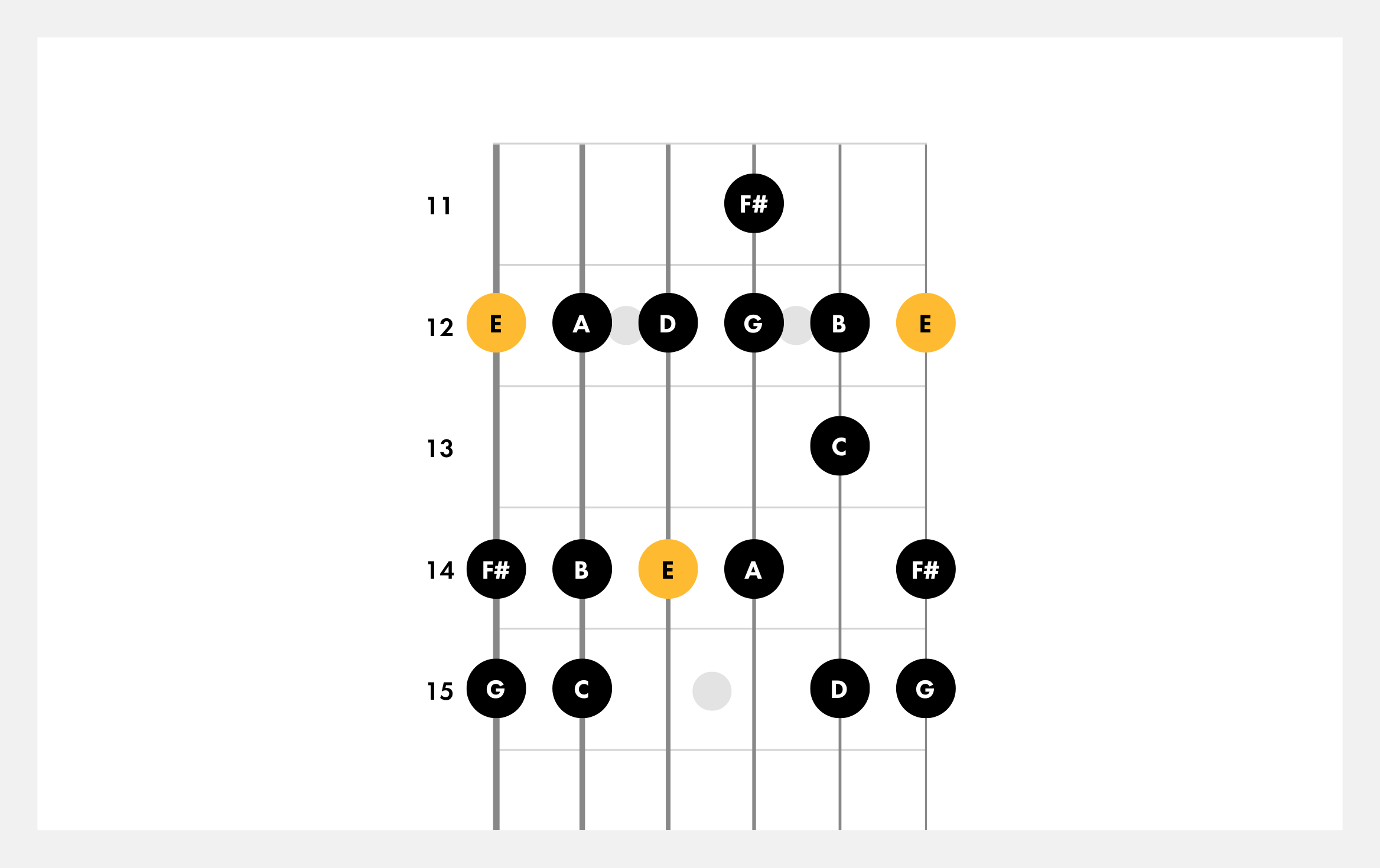How To Play Rush E On Guitar
Lesson: Playing the Due east Minor Scale on Guitar
The E minor scale is an first-class manner to learn some new sounds on your guitar. Right away, yous'll notice that the E minor scale sounds sadder and darker than bright and cheery major scales. This musical mood swing comes downwards to the difference between major and minor.
Major and minor chords evoke dissimilar emotions thank you to ane minor change in the scales they're based on. Merely lowering the third note of any major scale one one-half stride gives you that melancholy minor sound.
In this lesson, you'll learn the notes in the Eastward modest scale, likewise as the paw and finger positions on your guitar. Building on these basics, nosotros'll encompass chords using the same notes, allowing you to play a harmonized E minor scale. Knowing which chords complement the E small scale gives yous the power to understand lead and rhythm guitar parts written in this scale.
E Minor Scale Notes
The Eastward minor scale is made up of seven notes:
-
E
-
F#
-
G
-
A
-
B
-
C
-
D
The hashtag symbol next to the F tells you that the F is "sharp," one fret (or a half-pace) college than the natural annotation F.
Like every scale on the guitar, you tin play the E small-scale scale in several different positions. Let'southward accept a look at each i and the mitt and finger positions you lot'll use to play each note.
Don't miss out!
Exist the first to know nearly new products, featured content, exclusive offers and giveaways.
E Modest Scale Positions
One way y'all can learn to play the E minor calibration is by using the guitar neck calibration diagrams below.
On these diagrams, the numbered dots show y'all where your fingers will keep your guitar's fretboard to play the scale. Each finger of your fretting manus has a respective number that shows you lot the proper finger placement to play this scale. Hither'south how they are numbered:
-
Alphabetize finge
-
Middle finger
-
Band finger
-
Pinkie finger
White dots in the diagram represent open strings, which y'all play without fretting.
Similar all guitar scales, you can play the E minor calibration in several unlike positions. Each position requires its ain detail finger placements and hand positions.
In this lesson, nosotros'll await at iv E minor scale positions.
Open Position
To play the E minor scale in open position, y'all'll merely demand to put your fingers on the first four frets of your guitar. Use your index finger to play notes on the first fret, your heart finger to play notes on the second fret, your ring finger to play notes on the tertiary fret, and your pinkie to play notes on the fourth fret.

2st Position
To play this Eastward minor calibration, position your hand up one fret on the guitar. Now your index finger will play notes on the second fret, your middle finger will play notes on the third fret, your ring finger will play notes on the fourth fret, and you will utilise your little finger to play notes on the fifth fret.

seventh Position
Playing the Eastward minor scale in seventh position requires positioning your hand upwardly to play notes on the seventh, eighth, ninth, and tenth frets as shown in the diagram below.

12th Position
To play the E pocket-size scale in twelfth position, y'all'll play notes on the twelfth, 13th, 14th, and 15th frets equally shown in the diagram below.

-
Index finger on the 1st fret of the B (2nd) string
-
Middle finger on the 2nd fret of the 1000 (3rd) string
-
Ring finger on the 3rd fret of the D (quaternary) string
E Minor Scale Chords
Now you're gear up to start pairing the E minor scale with guitar chords. Only as in that location are seven notes in the East minor scale, we'll look at seven chords that pair with each step in the calibration. We'll bear upon on a bit of the music theory behind each chord, and we'll also share diagrams to help you acquire to play each chord in the E minor scale.
E Pocket-sized
As we mentioned at the beginning of this lesson, a minor chord is only i note away from the major chord. Where a major chord is built from the root, or start, note of the calibration, the major third, and the fifth, a minor chord is made up of the root, the small-scale third (which is 1 half-step flat from the major third), and the perfect fifth. The notes in the Due east minor chord are E, G, and B. Learn how to play the E modest chord hither.
F# Diminished (F# dim)
A macerated chord consists of only two notes, the minor third and the diminished 5th. Different major and minor chords, the diminished chord does non contain a root note. Every bit a outcome, these chords have an unsettled sound. The notes in the F# diminished chord are A and C. Acquire how to play the F# macerated chord below.
G Major
The G major chord is made up of the root G, the major third B, and the perfect 5th D. Larn how to play the K major chord here.
A Small
The A minor chord is fabricated up of the root A, the minor third C, and the perfect fifth East. Learn how to play the A minor chord here.
B Modest
The B minor chord is made up of the root B, the minor 3rd D, and the perfect fifth F#. To play this chord on your guitar, y'all'll need to study barre chords. Acquire how to play the B minor chord hither.
C Major
The C major chord consists of the root C, the major third Due east, and the perfect 5th Chiliad. Learn how to play the C major chord hither.
D Major
The root D, the major third F#, and the perfect fifth A brand up the D major chord. Learn how to play the D major chord here.
C Major Calibration Exercises on Guitar
To wrap things up, allow's attempt some Eastward minor scale exercises. Before you dig in to these exercises and drills, brand certain you've warmed upwardly by playing the Due east small-scale calibration slowly in each position, equally well as the chords of the Eastward minor scale.
Equally you're learning, it's best to start slow and focus on getting each note to sound clear while using the proper finger positions. Once you lot've built up dexterity and strength, you're ready to start playing faster.
East Pocket-sized Scale Ascending and Descending
One of the best means to memorize the E minor scale is to merely practice going up and down the scale in each position. Start with the root note and go upwards the scale: E, F#, K, A, B, C, D. Then, work your fashion back down the scale: D, C, B, A, G, F#, East.
If you'd similar to learn how to play even more chords, browse Fender Play's chord library, acquire about chord types, and observe tips on how to master them.
If you're not a member yet, sign upward for a free Fender Play trial!
Source: https://www.fender.com/articles/how-to/how-to-play-e-minor-guitar-scale

0 Response to "How To Play Rush E On Guitar"
Post a Comment